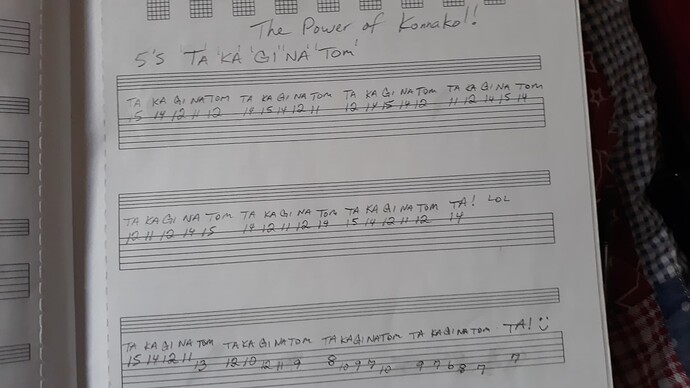Here is a fun thing I came up with to try to help with 5s. Make sure to use a metronome, and say Ta Ka Gi Na Tom aloud as you play these two licks. It can help break the monotony of always using sextuplets.
If you want I can put up picking instructions for different picking variations, Economy, Gypsy, Alternate etc etc, and I can add a suggested fingering if need be, but I figure most players here have different tendencies in this area so I left it alone.






